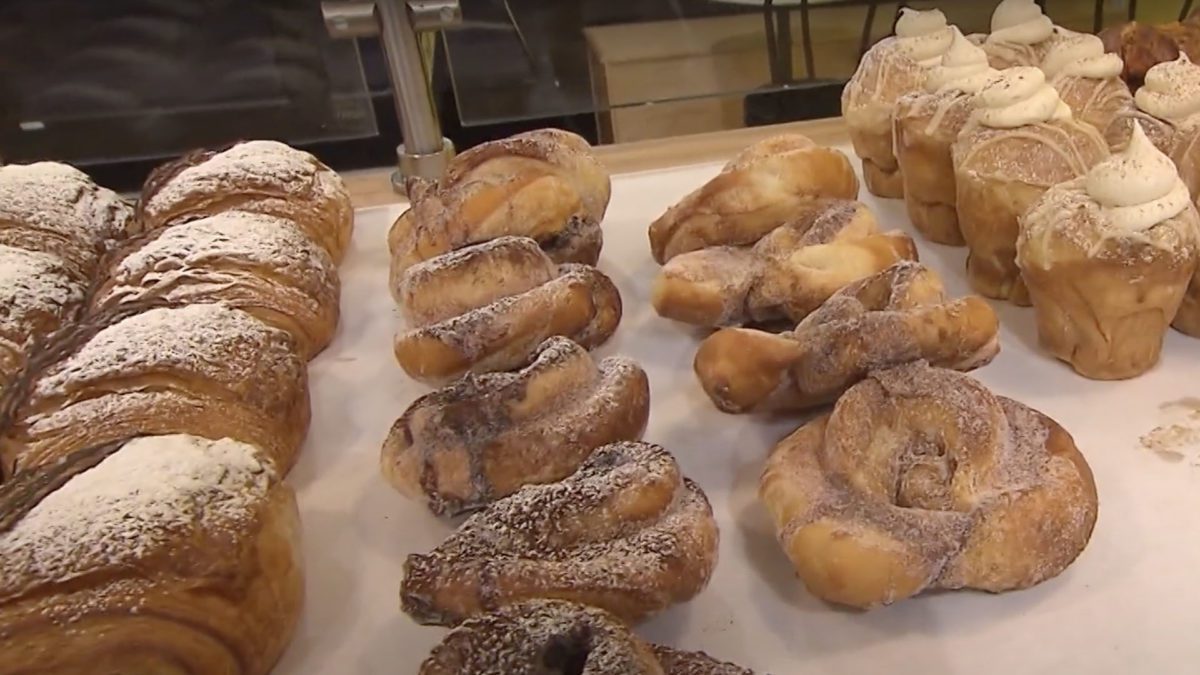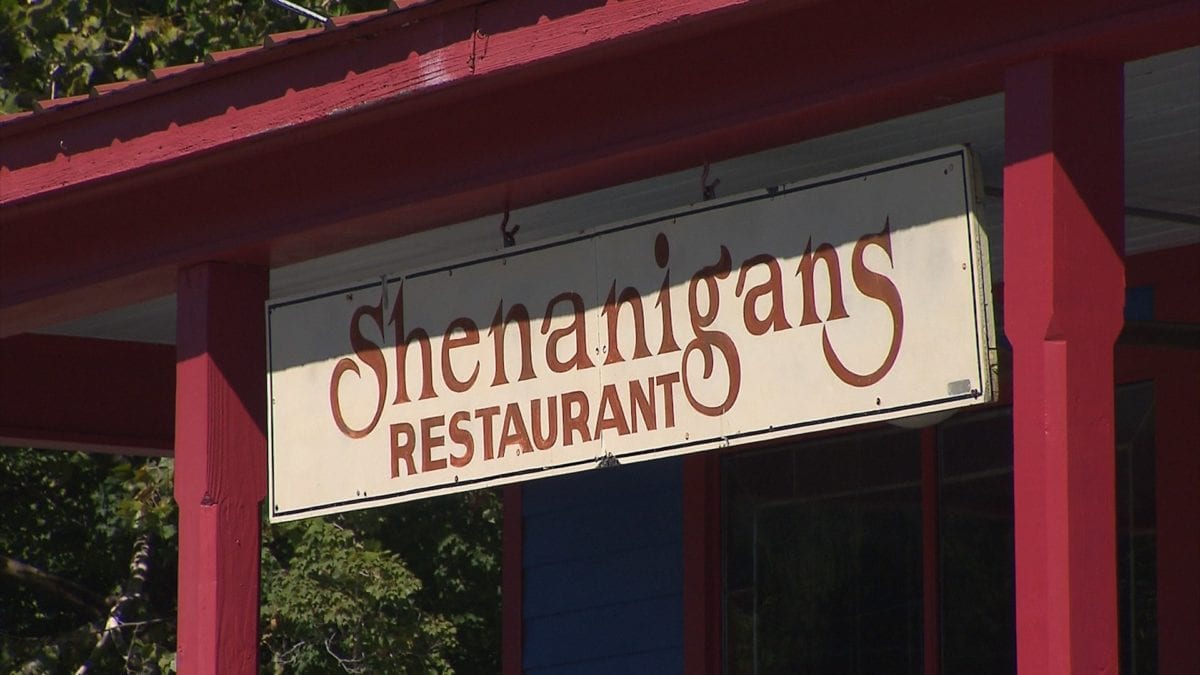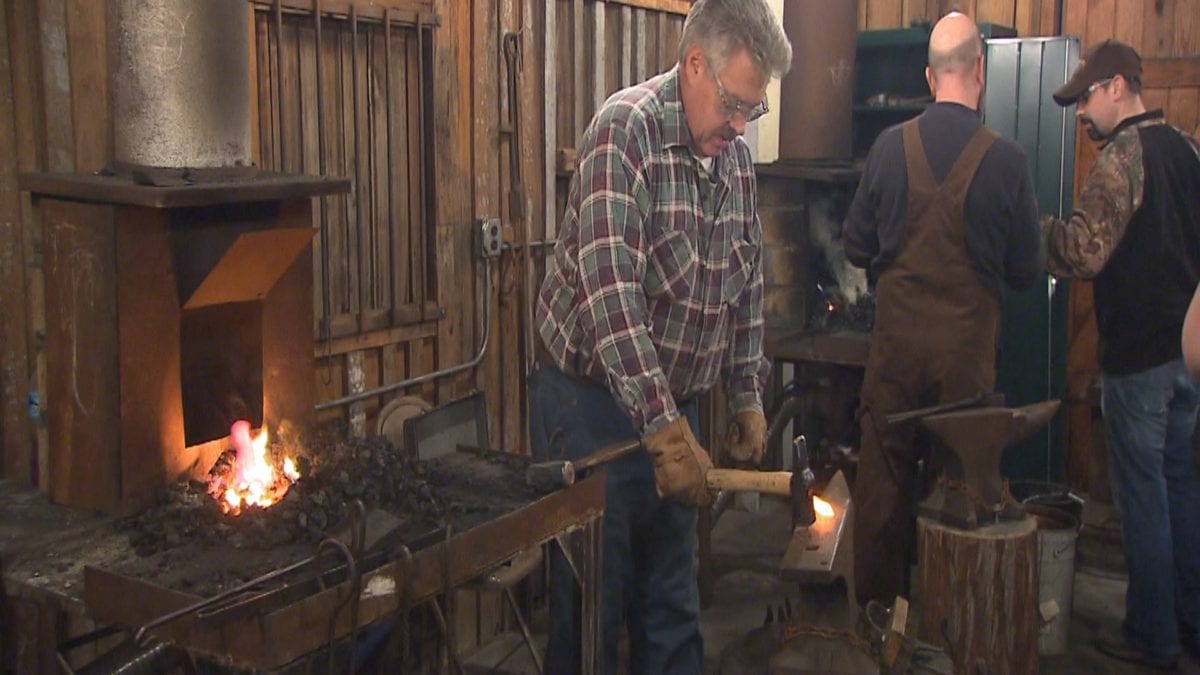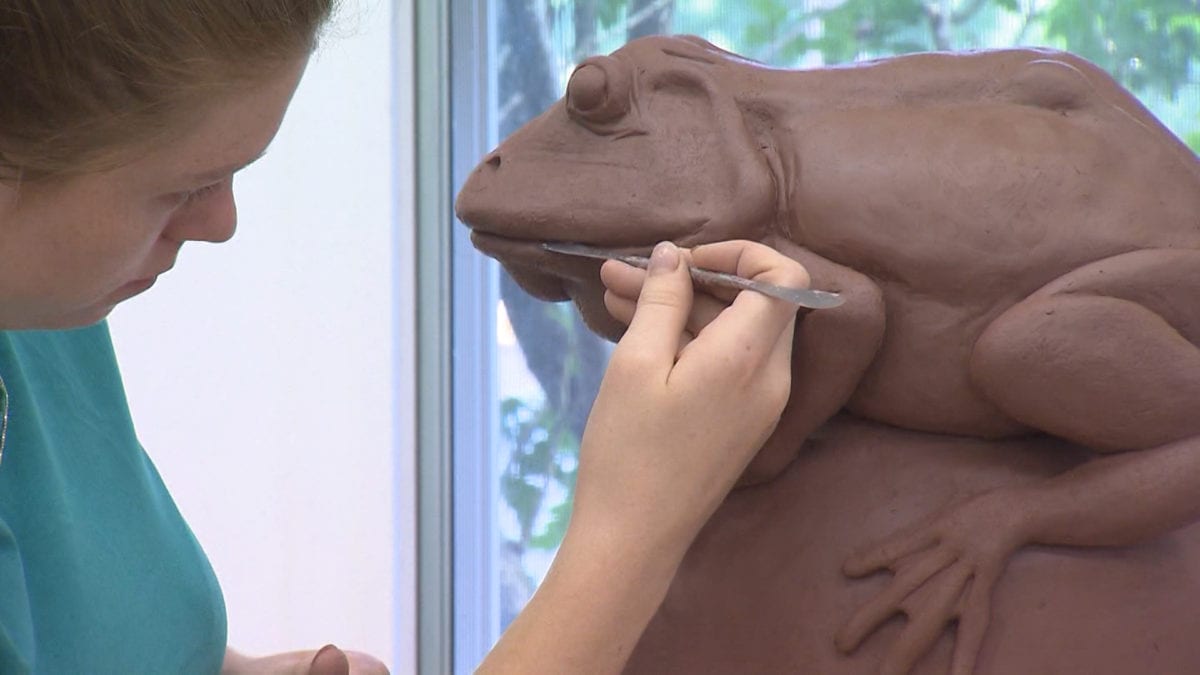Episode 3431
Don't have the PBS App? Click Here
Episode Transcript
- This time on "Tennessee Crossroads", we take you to an enticing, appetizing bakery in West Nashville. Then off to Gatlinburg's renowned Arrowmont School of Arts and Crafts. We will visit a landmark diner in the scenic Sewanee community and discover how some Rutherford County blacksmiths are forging modern day careers. Hi, everybody, on Joe Elmore, that's the lineup for this edition of "Tennessee Crossroads". Glad to have you. You might remember this slogan from a famous commercial. "Nothing says lovin' like somethin' from the oven." Well, Laura Faber found a bright and cheery bakery in West Nashville in the Nation's neighborhood that will surely whet your breakfast appetite. - [Laura] It's 6:30 in the morning and this cheery bakery in West Nashville has been in full swing for hours. Fresh baked goods are being prepped for customers who come to Brightside Bakeshop. From delicate and sweet Valrhona chocolate-stuffed croissants, drizzled with dark chocolate, sea salt and powdered sugar, to the exquisite and savory sausage and cheddar brioche, pastries like these guarantee a gastronomical experience. For baker and owner of Brightside Bakeshop, Andrea Borchers, this is a dream come true. - The earliest I can remember is kindergarten, kindergarten career day, I told my mom I wanted to be a baker and I dressed up as a baker. Feeling that's where I first saw my love of baking and baked goods was going to Grandma's house and she would always have something prepared on the stove. There's a certain happiness that comes with that and the simple joy that I wanted to share with the world, too, through Brightside. - [Laura] With a background in marketing and entrepreneurship, Andrea worked in the corporate world for a while but knew she wanted to give her passion a try. She is a self-taught baker and took specialized brioche and croissant classes at both Le Cordon Bleu in Paris and at the San Francisco Baking Institute. She knew breakfast pastries was where she would make her mark. In fact, the first bakery-worthy item she made is now her specialty, the Cinnaroll. - The entire process from start to finish takes three days. We make the dough on the first day, we roll it out on the second day and then on the third day we do the glaze and the frosting so it's one of our more involved pastries especially in the morning when we're glazing and frosting and everything but that's what makes it special and worth it. It has a vanilla glaze on it and a whipped cream cheese. So it's one of our more decadent items, too, but also the look of it is kind of over the top with the frosting on top. And a lot of people are like, "Oh, that looks too sweet," but then when they eat it, they're like "It's not super sweet," because of the buttery brioche. It kind of balances it out. - This is 2016 version of Brightside bakery, one of the first mixers that Andrea used when she was starting her business. A wedding gift from her husband used in her home kitchen, she's obviously come a long way since then. She now uses a dough laminator, a modern day rolling pin and commercial mixers and ovens and refrigerators. But her bake shop journey was slow and steady. Andrea started selling pastries on the weekend at the Richland Farmers Market where she built a loyal following. Eventually the time was right and Brightside Bakeshop was born. - But since we've built it up step by step, customer by customer, literally waited till the day people were begging us to open a shop, and I knew those people would show up on our opening day. That's what I feel like makes Brightside special, too, is we've cultivated that community and that connection with our customers. And they're the ones that have supported us from day one. - [Employee] All right, thanks, Doug. Have a great day! - [Andrea] So it's kind of amazing and I'm so grateful for everyone that's helped us along the way from our community to our team, yeah, it's really something special. - Hi, Ray, how are ya? Give me one second, I'll get your order for ya. - [Laura] Days can start as early as 1:30 a.m. as everything in this small batch bakery is made from scratch. The weekly grocery list includes 200 pounds of European butter, more than 700 eggs, 350 pounds of flour, and lots of freshly cut herbs. The results are gorgeous and delicious. - This is our double chocolate rolls. This is made with croissant dough but it's not laminated. It's rolled with chocolate chips and brown sugar. - [Laura] And that's pretty popular too, right? - Yes, these are both pretty popular. Our Sunshine Roll has a orange zest with brown sugar so this is more citrusy and this is gonna be your chocolate with cocoa powder version. - [Laura] Andrea challenges herself to make her pastries better everyday with a simple mission. Creating joy by baking days brighter. - This is my dream. So it's everything combined. I mean, from being a part of this amazing team to what we bring to the community on a daily basis to interacting with customers to the baking itself. And notice that I said the baking itself like one of the last things which is the reason I first got into it but so much has come with that that I just love everyday. Thanks, Victoria! - Thank you. - Thank you, have a great day! Uh-huh, bye-bye! - Thanks, Laura. Our next stop is Gatlinburg, commonly called the Gateway to the Smoky Mountains. This quaint resort-like village is known for its beautiful scenery, colorful history and great shopping for arts and crafts. And it's also a nationally known center for craft education, all thanks to a landmark campus called Arrowmont. It began life as a settlement school in 1912. A philanthropic endeavor of Pi Beta Phi women's fraternity with a goal of bringing basic education and healthcare to a remote mountain region. Soon, the founders discovered and helped develop a market for the weavings, baskets, and other handicraft items made by local residents. After World War II, Arrowmont opened its doors to the public for week-long workshops, a tradition that's continued and grown. Bill May was a professional stained glass artist before he was hired as Executive Director. - For me, it's beyond just learning art, just learning craft. It's really about learning to express yourself in a creative way. - [Joe] Students arrive from around the nation to this picturesque campus for weekend, one-week or two-week workshops, immersed in a creative environment many students describe as, well, magic. In the more than 130 class offerings, you can work in wood, clay, textiles, metal and much more. But it wouldn't be a nationally recognized arts and crafts oasis without top-notch teachers to lead the way. - All we can do is try to find people that we know are great artists, we know they do great work, we know they have skills, but more importantly, they have to be people who are at a point in their lives, a point in their career that they're ready to share and give back. - [Joe] We first dropped in on this class involving figurative sculpting with clay where students build life-sized forms with some psychological components. Curt LaCross from Alma, Michigan is the instructor. - Monday morning, we started putting our armatures together and we managed to put this all together in five days. - I'm impressed. - Yeah. - I'm impressed. - [Joe] This student, Neil Witt, is a retired lawyer from Birmingham, Alabama who found his artistic calling in this kind of expression. - And you couldn't learn this much in a year that we learned in a week just from sharing ideas with other classmates and learning some new techniques from good instructors. - [Joe] Now, who is this guy here? - This guy is "The Whiskey's Not Working Anymore". My work tends to be sort of whimsical in nature. And so , you know I try to make a serious piece but by the end, it's got a funny looking face and a hopefully humorous name. - [Joe] Erin Anfinson is an Associate Professor of Art at MTSU. She teaches this class centered around the use of encaustic paint. - So this is clarified beeswax, bleached and natural resin called damar resin. And then, so this is the paint without any pigment in it and we've been using a lot of this in the collage class and this is you put pigment to it and then you have these bars of paint. They kind of look like crayons, but you can't write with them and you have to melt them to work with them. A lot of people really like to use encaustic with layering. You can get a lot of atmosphere with it and just layering the paint and scraping back down and revealing. You can incise into it, you can draw on top of it, you can mix other oil-based media with it. And then what I really like to do is incorporate paper with it. So this class is designed around incorporating paper and collage, yeah. - It's a whole 'nother world. My wife really likes it after I've been here when I come home because I'm fired up for it for several months. - [Joe] And this newer class, you might get the idea of students are distracted by their cell phones. Well, you see it's all about using iPhones and Androids to shoot and edit professional style photographs. The instructor, Joshua White used his phone to shoot these insects for National Geographic. - [Joshua] Even if I was shooting with my SLR there wouldn't really be a difference in the print because of the size that I print them. - [Joe] After the shoot, it's all about the apps. - It's really kind of crazy how quickly the apps have evolved and how powerful they've gotten. Some of the ways in which they work on photographs are more powerful than what I can do on my computer or not more powerful, but maybe more intuitive. - [Joe] Now in this non-digital more primal environment, Laura McAdams Selden teaches a metal fabricating class that involves MIG welding, bending and grinding steel tubings. - So this is my first time teaching here and you're just surrounded by creativity. And you're surrounded by people that want to be here and wanna learn something new. You're surrounded by people that have really stressful day jobs and they just wanna do something creative for a week. You're surrounded by students that are in grad school that are trying to learn something completely new with no pressure of grades or politics or any of that. - [Joe] Arrowmont augments its creative mission with community outreach projects and this artist in residence program that allows emerging artists to spend a year here working on new bodies of work. The school's galleries offer the public a chance to experience changing exhibitions. All are professional works that compliment and support the workshops. From a rustic settlement school to a nationally respected epicenter of arts and crafts, Arrowmont's mission has always been enriching lives. It's a mission that's now in its second hundred years. - You know, people who are able to create don't just consume. They don't, they realize that meaning for your life is not necessarily something you buy. That happiness is not necessarily something you find. In many ways it's something you create. And I think being here, being involved in the arts is a way to be creative. - Sometimes a business, a restaurant for example, can capture the feel and even the spirit of its location. Now that's the kind of place that people gather from generation to generation. Rob Wilds discovered such a place called Shenanigans which has captured the spirit of Sewanee for decades. - This is the campus of the University of the South. Aah, it's gorgeous here. It's a nice little community, Sewanee. Now, sometimes universities and communities, they don't always see eye to eye on everything but one thing both can agree on here is where are we going for lunch? The where is easy. Shenanigans. The what, as in what to eat, well, that's harder. - The big one, okay. Now it's kind of a kitchen style of cheeseburger. It comes with mayo, mustard, lettuce, tomato, sauteed onions, mushrooms, Swiss and cheddar. - Let's do it. - All the way? - Go all the way. - All right! - Mercedes Ingles is the manager and she says a favorite is something that's been on the menu for decades. The Shenaniwich. - [Mercedes] Shenaniwich, you have a choice of bread with mayo, mustard, roast beef, ham, salami, cucumbers, tomatoes, sprouts and then we have a sub version that has banana peppers and onions. - Pretty good, huh? - It is. It's a great sandwich. And the sprouts make it. You can't can't eat it without the sprouts. - [Rob] Well, sure, the food brings people in but you know, it's more than that. It's the place itself which Mercedes knows from experience. She remembers coming to Shenanigans with her parents as a little girl. - It collects people, you know. We always see the same people day after day and it's people from every walk of life, you know, it's not just the students, it's the professors, it's the locals, it's people that work for the university. You know, people traveling through, it's just always kind of interesting. The crowd is changing a little bit, but still, there's always people that, you know and always somebody interesting to talk to. - [Rob] That's the way Bill Elder thinks of the place, too. It was closed for a few years, but Bill wanted it back so he and a friend bought it. - This place is really just the nexus, a gathering spot of Sewanee and all the three counties that kinda come together here. Yeah, memories all up and down the age spectrum for me, so far and more every day. - [Rob] And every night, which is when the more social nature of Shenanigans really shines. ♪ I'm seven broke ♪ ♪ Seven top to see ♪ ♪ Yeah, I was born from good looks ♪ ♪ That you'll see ♪ ♪ I've got $777 ♪ ♪ So don't you mess with me ♪ - Woo! - Will Winton is a local artist who was so inspired by the place, he decided it needed to be one of his subjects. - It's sit down and I start talking with folks I've known for 20, 25 years who've known my family for a hundred years and it, you know, it's very hard to put your finger on it, but it's very special and it's something that you can only get in a small little community like we have here. - [Rob] It is hard to put your finger on just why Shenanigans has become the meeting place for the college community and the townsfolk, too. Could be the decor, like an Elvis wall that sort of appeared over the years because... - Don't you love Elvis? Doesn't everybody love Elvis? - [Rob] Sure, but it could be the chance for personal expression. - We're well known for our bathroom art. - Are you? - Bathroom graffiti, yes. - [Rob] It's memorable, is it? You go back and take a look. - It is. And fortunately, it's usually fairly witty for bathroom art, not simply... So maybe the English majors from the school come over. - Yes, exactly. And philosophy, too, philosophy is vague. There's some good ones in there. - [Rob] You should check these out for yourself when you visit. Contributing to the graffiti is sort of a rite of passage for English and Creative Writing majors at the university like Will Bankie it and Hannah Neberbing. - You know, I've thought about it. I haven't yet, but it's definitely on my bucket list. - No, I decided that's gonna be my senior year before I leave. - [Rob] Beyond the artistic appeal, well, it's a fun place. - It's good for Sewanee students, BOGO nights. It's good fun, they do Name That Tune and other games. I don't know, it's a good place to be. - Just a fun family environment. I don't know, I feel like a good place to gather, it's always like sit down and have a cold one, have good food and be with your people. So I think it's a great place for people of all ages come here all the time. And it's a great way to meet the community. Working here, I've gotten to meet so many people like from town and it really brings your student life out to the broader mountain and I think that's a really good experience to have while you're here. - A few years ago, a student at Sewanee, Halley Ragsdale, actually did a research paper on Shenanigans. One source she interviewed said, "Shenanigans is an institution. "What would Sewanee be without it? "I can't imagine." Luckily we don't have to imagine. We can just go experience Shenanigans for ourselves. - Thank you, Rob. Back in the day, so to speak, when horses were the major means of transportation, well, if your family steed needed new shoes, it was off to the local blacksmith. And just as transportation has changed, so has the role of the blacksmith. Ken Wilshire discovered a creative new way some Tennessee metalsmiths are serving society. - [Ken] It's dirty, dusty, deafening, and can be dangerous. And if this isn't enough, it's also smoky and smelly. But these modern-day blacksmiths love it. - It's all about the fun and the camaraderie of the guys enjoying it. Enjoy the art of blacksmithing. - [Ken] Rutherford County Blacksmith Association president Clint Busbee says it's a weekly event here at Cannonsburgh Village in Murfreesboro. Students of this almost-forgotten art come here to hone their metalsmithing skills. - It's a state group and we're one of the ten forges that belong to this organization. There's groups all throughout the US and the resurgence in blacksmithing, I'm not sure exactly why, but we are just-- I've got a waiting list of people waiting to join our group and learn how to do this. - I'm not gonna hit it, I'm just gonna show you. You can take it and just get it hot. - [Ken] It's all hands-on instruction by some of the most talented and experienced blacksmiths in this part of the country. - And if it's the color of the fire, it's-- That's good, you can work with that. Just roll, roll, gentle roll. Yeah, and then work your way down to the point. You're gettin' there. - [Man] Well, I wanted to get that little piece out. - [Woman] And then when we need that little tip on the end and you may end up with a little bit of a flat spot, but that's okay. - You're processing 10 projects, you do the S hooks, then you do a pot rack and hotdog forks, a fire poker and a big door knocker and things like this. And so in the different projects you make, you come out learning that technique. So when you're all done, you have the basics to say you won't get hurt and you kinda know what you're doing a little bit. That's amazing. - That's one of the beautiful things about this. We're all volunteers here. Everybody's here for the craft. Professionals taking time out from their jobs and they will spend a weekend teaching us their techniques. It's a wonderful thing. - [Ken] There really is something alluring about working with white hot steel and I just had to find out what it is. - What you're trying to do is you're trying to bring that metal from parallel to a taper. A four-sided taper. - And that's most, the whole blacksmithing, that's how it all starts? - I can't stand here right now and think of anything that I would start blacksmithing that I would not use to start with a taper. - This one here? Well, all right, let's give it a shot here. Here we go. - [Instructor] Now it might be a real different taper. - All rightie. With me doing it, it will be a different type-- - No, I mean a different type of taper. - Yeah, it will be a different-- - Come back on the anvil a little bit. There you go. You got the right pitch in the hammer, exactly right. If I could teach all of my new students to do that, I'd be in business, but you're letting the point get over, you see, it's puttin' a knob on it. - Pull it back, back here? - When that happens, pull it back, lay it flat and straighten this out. - Something happens at some point and then you can see it just clicks. It might be difficult for some, some catch on fast, some are slower, but at some point, they realize, "Wow, I've got it." And when you see that spark and they're like, "Wow," and they start doing things without you tellin' 'em, if they show you a project they've done and they tell you what's wrong before you do, then you know you're doing something right. So I'm on my way to a chandelier? - You're pretty far along. Another 1500 hours, you'll have it. - Yeah, really! You won't find horses waiting to be shot or a farmer in need of a new plow. Instead when these craftsmen call it a day, there are candelabras, coat hooks, and metal creations galore. But it takes practice and patience. - And you see the students that, you know they had the hardest time making a simple S hook and I tell 'em, don't give up, it'll evolve and you'll realize later on, you know, it was really easy. And then they ended up making these beautiful pieces of art. You know, it makes you feel like this, this art of blacksmithing is gonna be saved 'cause they're gonna keep teaching, and everybody's gonna keep learning and teaching. And the more people that know, it won't be lost. - [Ken] Well, it may not be a glamorous art form with all its hazards and hard work, but for thousands of years, blacksmiths were as necessary as doctors and teachers. So thanks to groups like the Rutherford County Blacksmith Association, we'll forge ahead with the clanging of hammers on hot steel and continue to enjoy the beautiful creations of this ancient art. - Well, that's gonna bring us to the end of another "Tennessee Crossroads". Sure appreciate you joining us. And in the meantime, why don't you check out TennesseeCrossroads.org to see some of your favorite old stories. Follow us on Facebook, of course and I'll see you next week. Take care.
Tennessee Crossroads
March 18, 2021
Season 34 | Episode 31
Laura Faber found a bright and cheery bakeshop in West Nashville. Joe Elmore makes a return visit to Arrowmont School of Arts and Crafts in Gatlinburg and finds an artistic oasis overflowing with creativity. Rob Wilds visits Shenanigans Restaurant. Ken Wilshire discovers a creative new way some Tennessee blacksmiths are serving society. Presented by Nashville Public Television.




